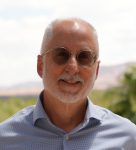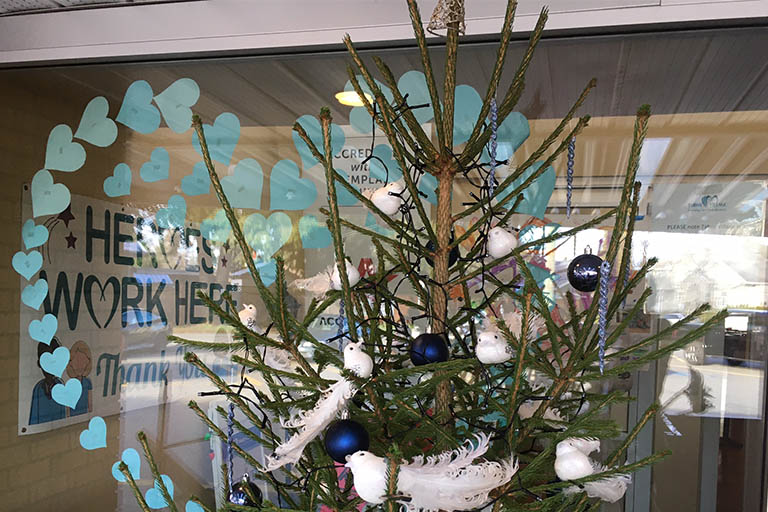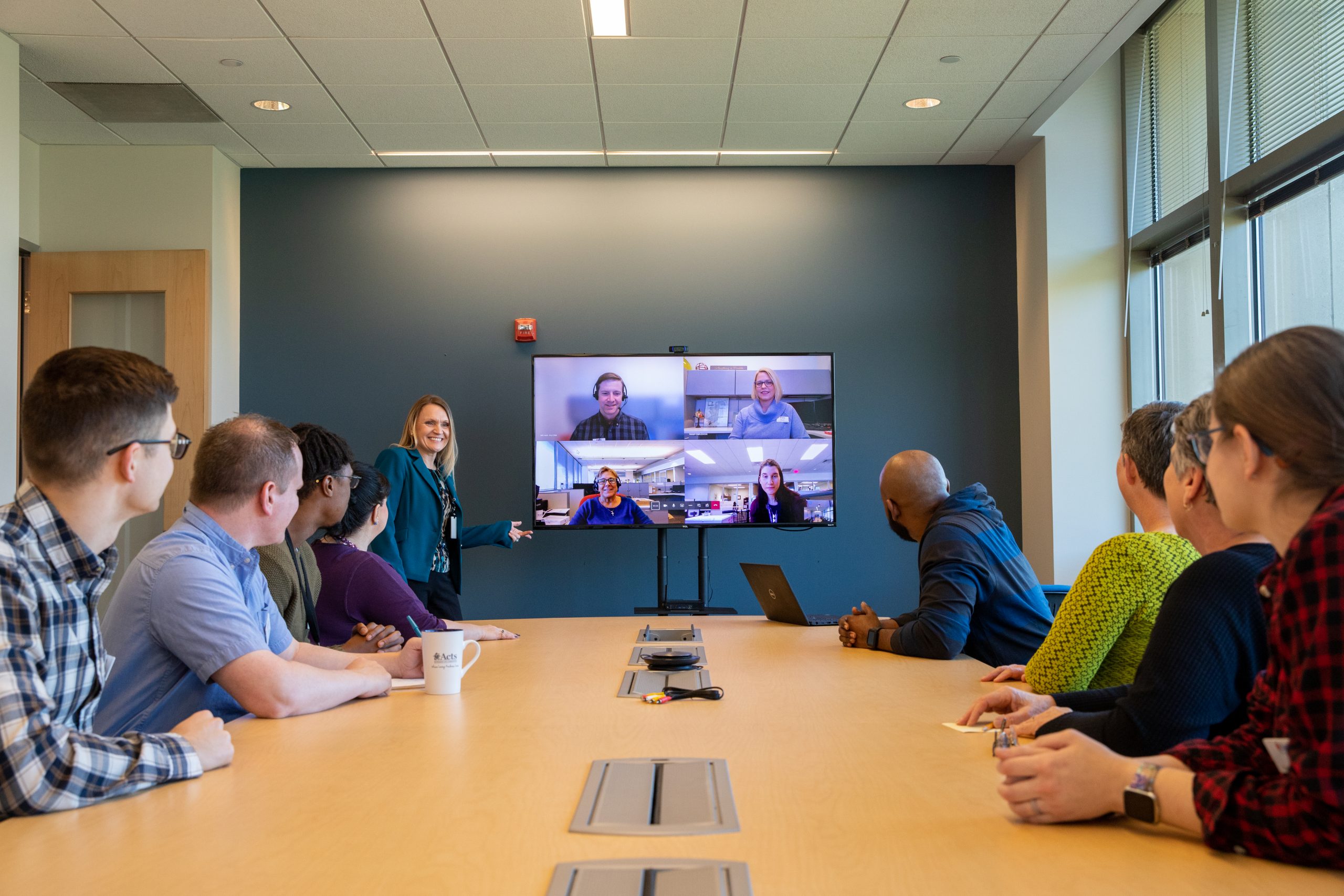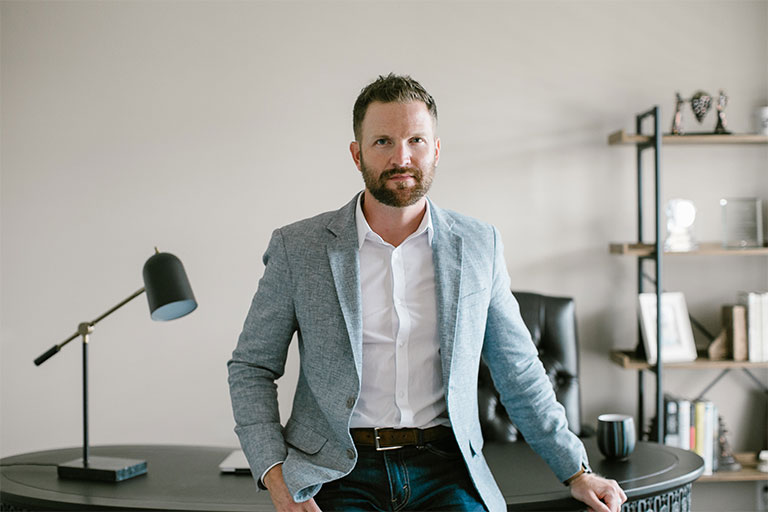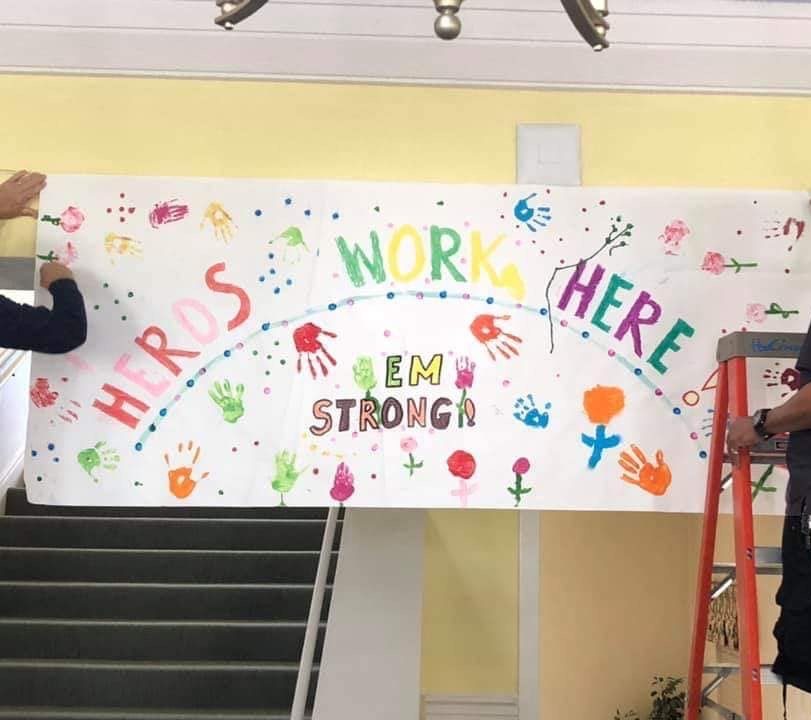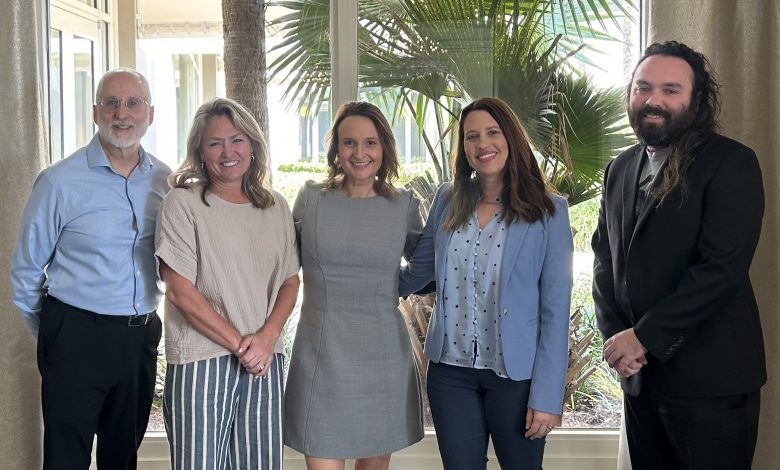
HEALTHTAC East 2024 Panel: The Resident Connection
By Jim Nelson | April 4, 2024
AMELIA ISLAND, FL — HEALTHTAC recently held its biannual executive senior living-centered retreat at The Ritz-Carlton on this small island near Jacksonville, Florida. Now that everyone has returned to work it’s a perfect time for a refresher on some of the key takeaways from the four panels HEALTHTAC held over the two-day retreat (Senior Living News and HEALTHTAC are sister companies), including one about resident connections. This panel was designed to look at ways in which we connect residents within and outside of our communities.
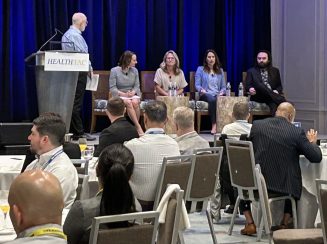
“We have a proprietary program called Enrichment Beyond Expectations,” replied Health Dimensions Group CEO Erin Hennessey when the panelists were asked to briefly touch on their various programs that create interactions between residents. “This is a holistic program: how we’re presenting our food, how we’re celebrating birthdays, how we’re interacting with our family and friends. We surround that program with our Dimensions of Wellness, and that creates our Enrichment Beyond Expectations program, which is taught to every single employee in our communities so that they can each make sure that all of those factors impact our residents’ lives.”
“We started adding ‘community tables’ in the dining rooms,” said Kristin Ward, co-CEO of AgeWell Solvere Living. “Residents sign up [to sit at the community table] and the resident ambassadors sit there with new residents; it eliminates the cliques that you get and the uncomfortableness of going into the dining room for the first time when someone moves in. And it’s really taken off; it’s great to see how people have to reserve in advance now to sit at the community table because they’re excited to meet different residents that they don’t usually interact with.”
“We’re a lot about purpose,” revealed Allison Pendroy, COO at WesleyLife. “Research shows that the right outlook and purpose in life can add seven years to your life, so we have a lot of organic special-interest groups that are resident driven, but also team member-led. One thing we like to do is Wine at Five; at all of our communities Monday through Friday, have a glass of wine on us at five o’clock — it subscribes to the Blue Zones theory, and what better combinations and discussions happen at that time?”
David Sawyer, the CEO/founder of TSOLife, then emphasized the importance of knowing the residents and their individual interests.
“All of our customers really believe in purposeful engagement,” he said, “and the way that you deliver that is by understanding who the person is. One of the things that we’ve seen shift a little bit in the industry is not trying to do a blanket approach, saying, ‘We’re going to give them everything’ … so being able to understand who each individual resident is, and making sure that we’re able to deliver what specifically is personalized for them.”
And what about connecting residents with the greater community outside the building?
“I think coming together, again, over food and beverage is a great opportunity,” said Pendroy. “Many of our locations in Iowa are in smaller, more rural markets, so we want to create that ‘Main Street’ that pulls the broader community in. As a nonprofit, we also believe our mission is much larger than the walls of the physical infrastructure that we have, so we provide a lot of catering to our communities. We’ve recently, over the past year, reconfigured and reconstructed and renovated a 100-year-old mansion that we’ve turned into a bed-and-breakfast for the broader community and a pub [where] over 60 percent to 70 percent of the sales that we do is from outside of the walls of the community. It’s a great opportunity for many different ages and generations and families to come together with our residents and members and dine together.”
“Similar to what David was saying about understanding what the residents’ interests are,” Ward said, “we use those same profiles to help connect them with volunteer opportunities outside, whether it’s with schools or with SCORE, the Senior Corps of Retired Executives — we started getting partnerships with that organization, there’s one in every state in every local area — things like that.”
“One of my favorite programs that we have is with a local high school in the Denver area,” Hennessey said. “It’s a school where the kids are focused on entrepreneurship and business, and they get to do different rounds: they’ll go to Lockheed Martin, they’ll come to our community, they’ll rotate through. They come with a teacher; it’s part of a course, not like a kid’s parade where the kids are coming through handing out candy — it’s real engagement with these high schoolers. And high schoolers start to ask questions. We have them do our ‘My Story’ interviews, and it’s intergenerational. It really engages our residents with a local high school, and we’ve also found that beyond resident engagement we’re catching some young students who have maybe changed their idea of their career path because it’s the first time that they’ve ever been in a senior living community.”
Sawyer, who founded and heads up a resident engagement company, next discussed what data senior living operators should be looking at to measure connectedness for their residents.
“If we really think about what engagement has been historically, from a data standpoint,” he said, “the only way to really track it has been the attendance data; if residents were attending events then they were socially connected, they were happy, and we didn’t need to worry about them; if they weren’t going to things, they were socially isolated and depressed, and we need to go intervene. At TSOLife we introduced a lot of social measures around quality of life and self-rated health, that are then correlated to things like depression, cost of care, and longevity. We’re able to get much better data on what we should be focusing on. The funny thing is we partnered with Columbia School of Social Work and we took the quality-of-life data and overlaid it with the attendance data; the thinking would be people that were attending things had a higher quality of life, but we actually found the inverse of it was true: The residents who were going to the most activities, actually, on average had a lower quality of life than the residents who were going to basically nothing. What we found is the residents who were not attending any events already had their small group of friends they were doing things with; they were not relying on the Community Calendar to provide that engagement. The residents who were going to Scrabble — can’t spell, still going — swimming — I can’t swim, I’m going anyway — they were desperate for that social connection, and they were relying on the community to provide it. As an industry, we were ignoring them because they were coming to things, so we thought they were happy, and really, they were the ones who were most desperate to find that improvement to quality of life.
“The number one thing that is most correlated with quality of life,” he concluded, “is a resident’s satisfaction with their friendships — which goes to the ethos of this panel — connecting the residents with what matters to them is the most important thing we can do to improve a resident’s quality of life.”
“One of the things we try to facilitate is the concept of moai, which is based on Blue Zones,” Pendroy mentioned. “It’s people who have similar interests coming together. So, we have walking clubs across all of our campuses, taking into account walkability and pathways that are wide enough to support at least two people walking together. Those clubs that are there for each other every day to support and talk about life, just bringing together special interest groups.”
What about resident-driven classes or clubs?
“A lot of these really self-create,” said Hennessey. “We have really detailed programs on enrichment, and we have planned things, but behind the scenes we have a post-breakfast group at one of our communities and we have a group that started to do a cooking with alcohol class — my last name is Hennessey, so it all makes sense — where they’re doing flambé things. It’s interesting how people come together and create these groups. And we found that most people want to make their group bigger, just like [they] talk about in the Blue Zones. If we start to see a group forming, we go to them and say, ‘What can we do? Can we give you a better space? Can we bring appetizers?’”
How do social determinants of health (SDOH) fit into this conversation about resident connectivity?
“I think we’re all still trying to figure that out,” Sawyer answered. “In November, the White House released a new game plan for how to make SDOH’s a major part of healthcare by 2030. Their goal is to figure out how we measure it to identify the gaps that we have. I really think senior living has a phenomenal opportunity to start to take part of some of these programs. For one, there are ICD-10 codes out there that if you’re testing for SDOH’s you can have reimbursed. If you identify an SDOH that is a barrier to health, you can have up to an hour a month reimbursed by a non-clinical worker, a non-licensed worker, to help facilitate that improvement. And right now, insurance groups are looking at these community hubs, as they call it, where they can now address these SDOH’s for their members. Senior living needs to be at this table putting their hand up saying, ‘Hey, you guys need transportation? Guess what we do for our residents. Hey, you need dining? Guess what we do for all of our residents.’ And the thing that senior living needs to start doing is having the data so that the insurance groups can compare apples to apples and go, ‘Wait a minute, these members living in these great communities are having these needs addressed and we’re seeing the decline in health costs to our insurance groups.’ I really think that this is a great opportunity for senior living to get involved, get the right data, and start taking advantage of these great programs that are going to be available.”
The panelists were then asked about programs or activities designed to address all the dimensions of wellness.
“Our organization is called Health Dimensions Group,” said Hennessey, “but we also have our Dimensions of Wellness program that addresses all of these things: social, spiritual, engagement, and making sure that within each of these are some specific activities that we can give to our communities. Because they’re busy. Here are the things you can do within each dimension that are easy; we can hand you everything you need to do these things.”
“We call it a toolbox,” Ward added. “It’s a building block to start with, but then add your own creativity, adjust it for the residents, or adjust it for what you want, but ensure that all the dimensions are covered. And then quarterly, we do a Travel Times; the way we approach it throughout the month teaches the teams how to incorporate all the dimensions of wellness; there has to be an intellectual component, they have to learn the language, they have to have language classes every week, they have to not just taste the food and have a fun meal, but they also learn how to cook a meal from that country. The residents are the ones that vote on the countries they want to visit. That’s one way that we help give them a very specific toolbox that they can get really creative and fun with, and we have contests every quarter to highlight and shout out the ones that are the most creative. There have been some crazy creative things. It’s Japan right now and some of the things I’ve seen are the residents doing a koi pond and bonsai tree trimming.”
